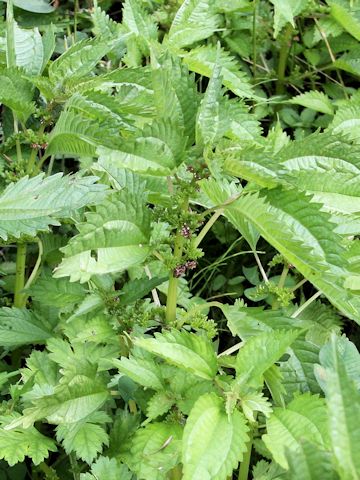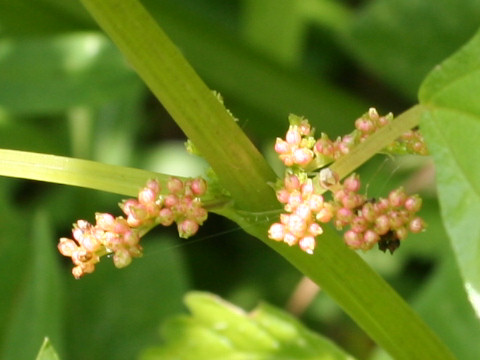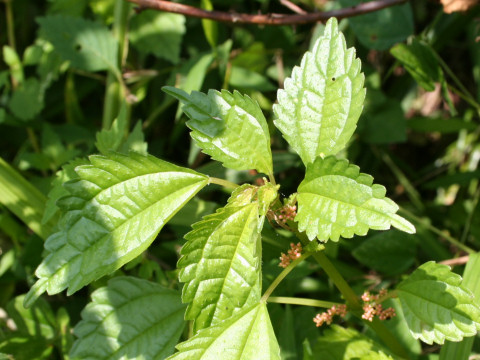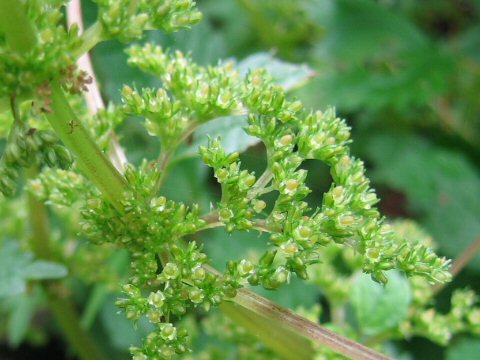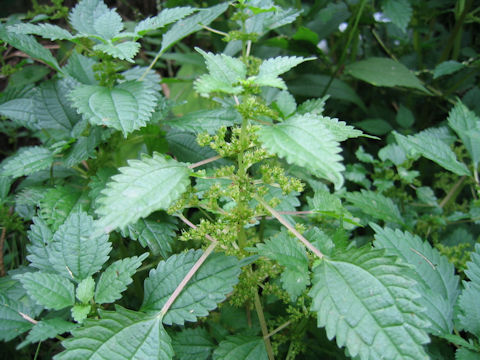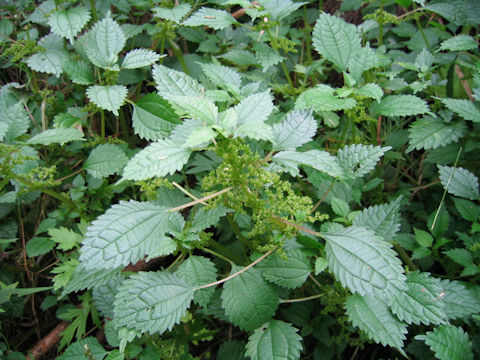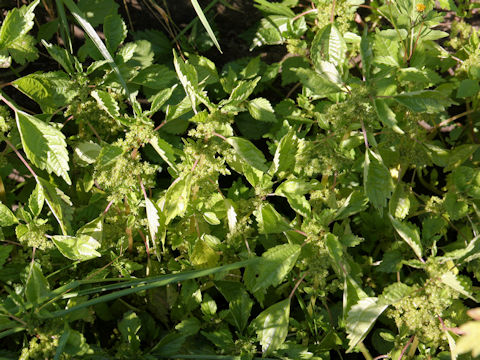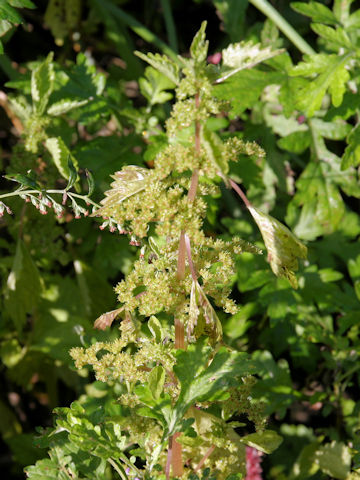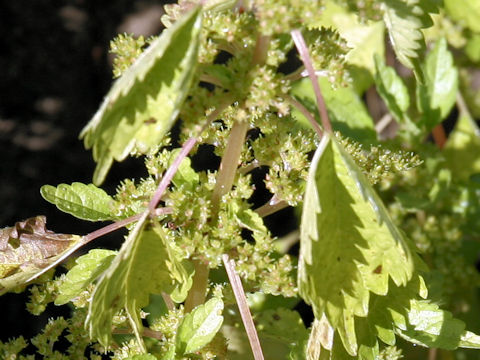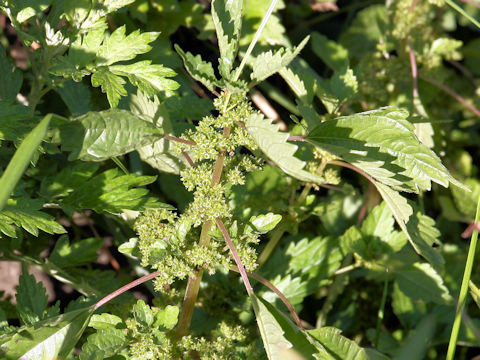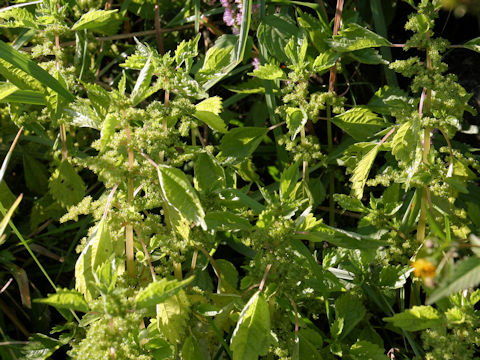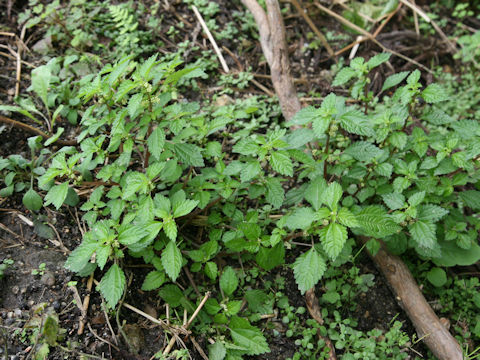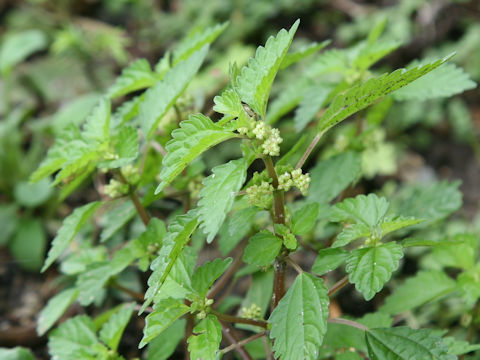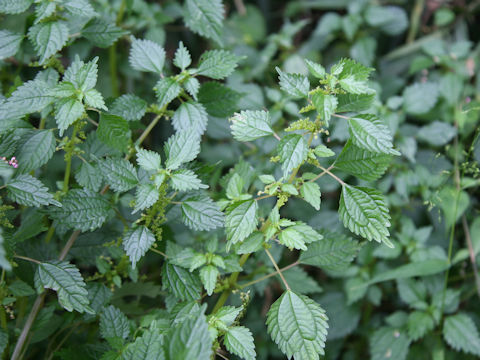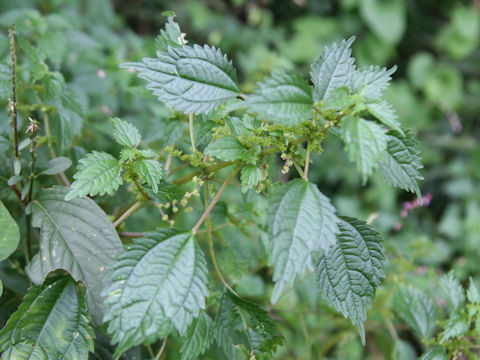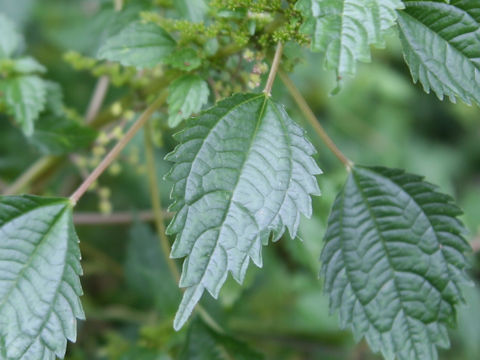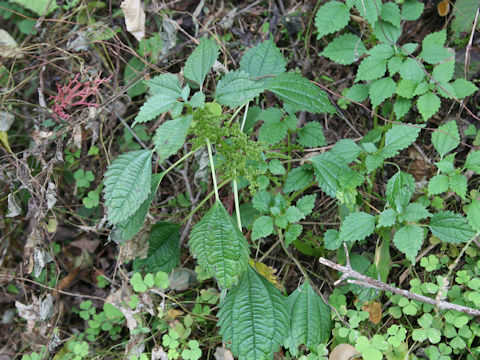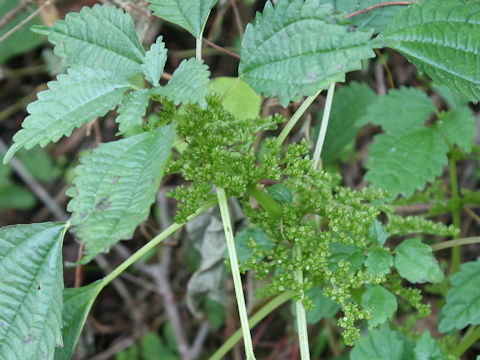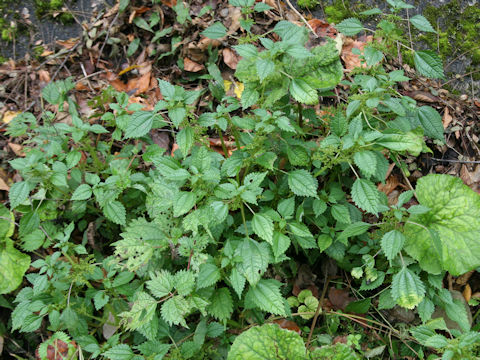
|
|
|
|
−− もっと見る(Show more)−−
−− 閉じる(Close) −−
|
|
|
|
わが国の各地をはじめ、台湾や朝鮮半島、中国、シベリア東部に分布しています。湿り気のある野原に生え、高さは30〜50センチになります。葉は卵形で3本の主脈があり、粗い鋸歯があります。また葉柄は長く、対生します。7月から10月ごろ、葉腋に細かな雌花と雄花を咲かせます。名前は、全体が緑色でみずみずしいことによりますが、軟らかい葉や茎は山菜として利用されます。「みず」とよく似ていますが、葉の鋸歯が多くて10個ほどあり、花序に柄があるのが特徴です。台湾華語では「短角冷水麻」、中国語では「透茎冷水花(tou jing leng shui hua)」と呼ばれます。 |
|
|
イラクサ科ミズ属の一年草で、学名は Pilea mongolica (syn. Pilea pumila)。英名はありません。 |
|
|
The "Ao-mizu" (Pilea mongolica) belongs to Urticaceae (the Nettle family). It is an annual herb that is native all over Japan, as well as Taiwan, the Korean Peninsula, China and the eastern Siberia. This herb grows in moist grasslands and can reach 30-50 cm in height. The leaves are ovate, three-veined and coarsely serrate. They have also long petioles and are arranged oppositely. The slender female and male flowers bloom in the axils from July to October. The tender leaves and stems are used as a wild vegetable. It is difined by the about 10 serrated edges on one side of leaf blade and the petiolated inflorescences. It is called "短角冷水麻" in Taiwanese Chinese and "透茎冷水花" (tou jing leng shui hua) in Chinese. |
|
|
[上・中1] 群馬県沼田市利根町にて、2010年10月02日撮影。 [中2・中3] 滋賀県多賀町霊仙「霊仙山」にて、2005年09月09日撮影。 [中4〜中6] 兵庫県神戸市北区山田町上谷上「六甲山」にて、2004年10月18日撮影。 [中7〜中11] 宮城県川崎町支倉にて、2020年10月20日撮影。 [中14〜中16] 同上にて、2024年10月05日撮影。 [中12・中13] 宮城県大河原町大谷にて、2024年09月28日撮影。 [中17〜18・下] 宮城県七ヶ宿町「七ヶ宿ダム」にて、2024年10月26日撮影。 |

|
|
Shu Suehiro |
